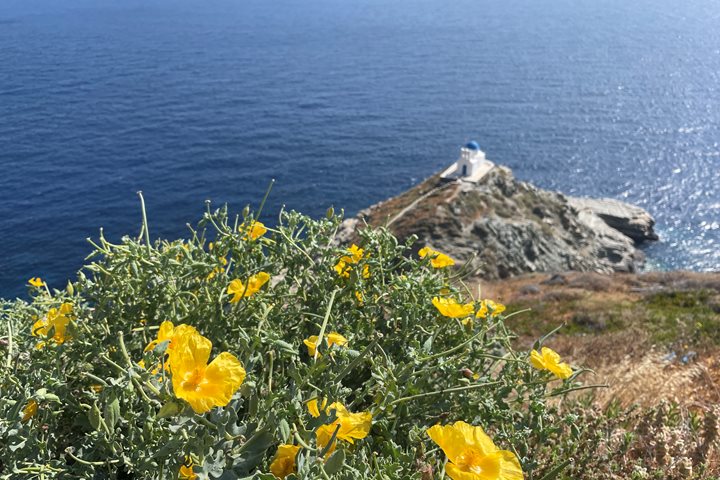Having spent the night at anchor off Nea Kameni in the caldera of Santorini we were in the perfect position to watch the sunrise behind the island. Bathed in muted tones of mauve and orange, the houses that tumble down the cliff toward the sea below at first blended into the rock and ash layers, but by the time we were loaded into our local tender and cruising towards Athinios to our waiting buses, the houses that lined the cliff tops looked more like dripping icing on a wedding cake. Our morning destination was the peaceful village of Oia, the former haunt of local sea captains on the northwest tip of the island. When we arrived we had the village with its stunning views, pastel houses, and blue-domed churches to ourselves, save a whole host of photographers taking photos of young Asian couples in their wedding attire. Luckily for us, the hordes of day-trippers from Crete did not arrive until we heading back to our coaches!
One of the highlights of the day had to be the tasty lunch of mezedes we had Nektario’s Kallisti Taverna in Pirgos. Homemade bread and white Santorini wine waited for us on the tables, but before long plates of chopped shepherd’s salad, tomato fritters, hot out of the fryer, and the bougiourdi (melted feta with herbs) arrived at the tables. The local fava beans were cooked, pureed, and served with chopped onions, salted capers, local cherry tomatoes that had been baked and stuffed with seasoned rice, grilled white eggplant and keftedes (Greek meatballs). The house specialty–portokalopita–orange sponge cake was served for desert (recipe to follow). This truly is what travel is about–experiencing not just the sites, but the tastes and smells of a peaceful Greek village.
After lunch we drove to the Bronze Age site of Akrotiri on the southeastern tip of the island. Buried under 12-20 meters of ash and rock in the same volcanic explosion that formed the caldera in c. 1627 B.C. this once thriving Minoan trading colony was discovered in 1950. The original residents must have sensed that something was amiss with their island home, as archaeologists have determined that the site had been abandoned prior to the eruption. Although the frescos that once decorated the walls have long since been removed from the houses and placed in either the local museum or the National Archaeological Museum in Athens, the decorated pithoi (storage jars) are still in situ and the empty bed frames are stacked up where the original residents had left them.
All too soon it was time to return to the ship where the amazing galley crew had a Greek buffet waiting to tempt us with more local delicacies as we sailed out of the caldera–bound for our next adventure.







